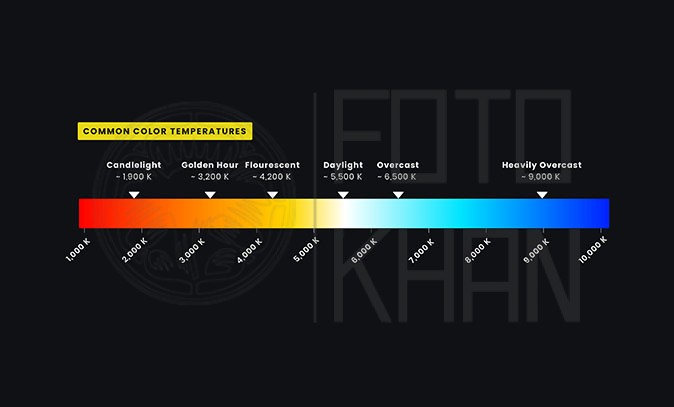Understanding color temperature is a fundamental aspect of photography, and for beginners, it plays a vital role in achieving accurate and visually appealing images. Color temperature refers to the warmth or coolness of light, measured in Kelvin (K) degrees. Different light sources emit light with varying color temperatures, and grasping this concept can significantly enhance your photography. Here are some valuable tips for beginners on understanding color temperature:
1. The Kelvin Scale:
The Kelvin scale represents the color spectrum of light sources. It ranges from warm to cool:
- Warm Light: Lower Kelvin temperatures, typically in the range of 2000K to 4000K, create warm and orange or yellowish hues. Candlelight and incandescent bulbs fall into this category.
- Neutral Light: Mid-range Kelvin temperatures, around 4000K to 5000K, produce neutral white light, often referred to as daylight. This is the color temperature that closely matches natural sunlight.
- Cool Light: Higher Kelvin temperatures, ranging from 5500K to 10,000K or more, result in cool and bluish light. Overcast skies and electronic flashes often have cool color temperatures.
2. White Balance:
White balance is a camera setting that allows you to adjust for different color temperatures. Understanding how to set the appropriate white balance is crucial for capturing accurate colors. Most cameras offer preset white balance settings like “Daylight,” “Cloudy,” “Tungsten,” and “Fluorescent.” Additionally, you can use custom white balance settings to match specific lighting conditions accurately.
3. Creative Use of Color Temperature:
- Warm and Cozy Atmosphere: To create a warm and cozy atmosphere in your photos, use a lower color temperature setting like “Tungsten” or adjust it manually. This is great for portraits taken during the golden hours.
- Cool and Crisp Look: For a cool and crisp look, especially in landscapes or urban scenes, use a higher color temperature setting or choose “Daylight” for neutral colors.
- Mixed Lighting: When shooting in environments with mixed lighting sources, like indoor spaces with both natural and artificial light, be mindful of the color temperature differences. Correct white balance settings to ensure accurate colors.
4. Post-Processing: If you shoot in RAW format, you have more flexibility to adjust color temperature during post-processing. Editing software like Adobe Lightroom allows you to fine-tune the white balance to achieve your desired look.
5. Color Temperature and Emotion:
Color temperature can evoke specific emotions in your photographs. Warm colors often convey coziness and intimacy, while cool colors can create a sense of calmness or isolation. Consider the emotional impact of color temperature when composing your shots.
As a beginner photographer, understanding color temperature and how it affects your images is essential. It allows you to control the mood, atmosphere, and visual impact of your photos, resulting in more compelling and evocative imagery. Experiment with different settings and lighting conditions to master the art of color temperature in photography.

